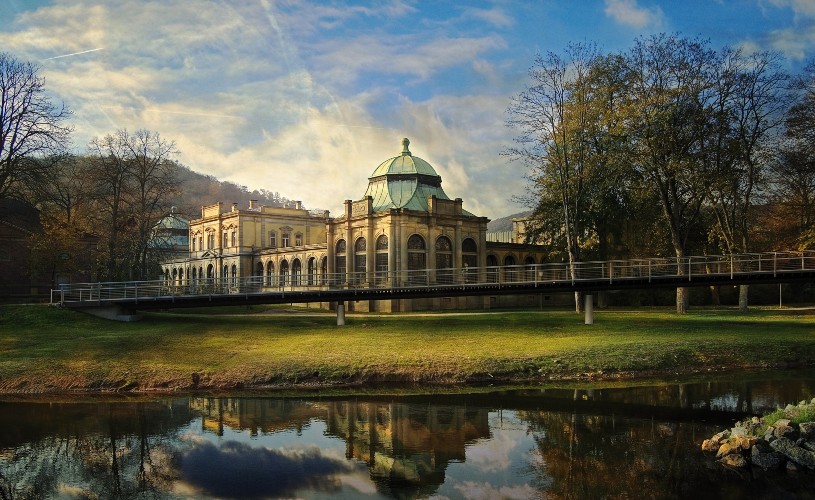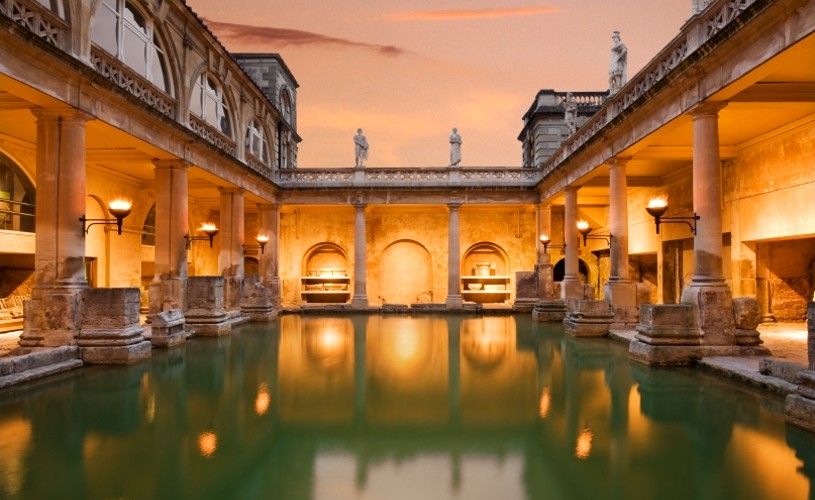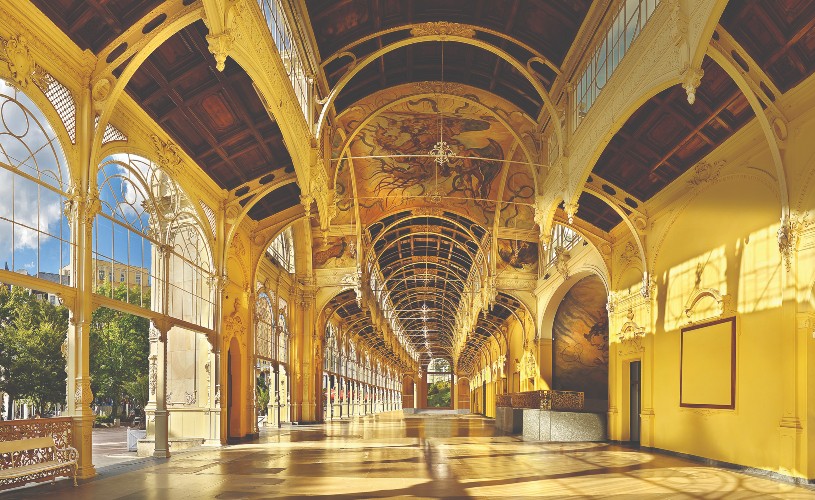Did you know Bath has a second prestigious World Heritage inscription by UNESCO? The city is one of the Great Spa Towns of Europe, a collection of historic and influential spa destinations.
We asked Tony Crouch, City of Bath World Heritage Site Manager, to tell us more about the Great Spa Towns of Europe project.
The History of Europe’s Spa Towns
Thanks to Michael Portillo’s televised train travels, many will know Bradshaw’s historic railway guides. Fewer though will have heard of the Bader Lexicon guide (1854), which listed 652 major mineral-water spa towns across Europe. This was just the tip of the iceberg, as many other would-be spas existed (even Devises, Wiltshire, once modelled itself as a spa).
However, only a few such resorts rose to prominence and of those even fewer remain intact today. The Great Spa Towns of Europe project, which includes the City of Bath, achieved its goal to conserve and celebrate the cream of these outstanding places through UNESCO World Heritage inscription when it was added to the World Heritage list on 24th July 2021.

Image - Thermae Bath Spa
Every culture has a natural water bathing tradition. For example, the saunas and banyas in Scandinavia and Russia, the hammam in the Middle East and the Onsen tradition in Japan. From 1700 to 1930 the European spa became the ‘must-visit’ place for early tourists, greatly facilitated by the arrival of the railways.
Europe’s spa resorts were unique in many ways, not least because they mixed social classes together and this democratisation of society involved royalty literally coming down from their castles to mingle with ordinary people. Artists, poets, musicians (Beethoven, for example, in Baden bei Wien) and scholars mingled freely in these ‘cafes of Europe,’ in a way only seen elsewhere in the great metropolises.

Image - Bad Kissingen, Germany
Taking the Waters
The attraction was of course not only for leisure. Many ‘curists’ came for their health and still do. Early diagnostic medical practices based around water treatments, mixed with a regime of prescribed outdoor exercise, were the precursor of the modern ‘wellness’ movement. The Mineral Water Hospital in Bath (opened in 1742) provides a good early example.
The countryside around spas was deliberately managed as a ‘therapeutic landscape’, providing parks, gardens, walks, and rides. The urban environment was designed as an open-air resort, including such structures as bathhouses, pump rooms, assembly rooms, grand hotels, covered colonnades and wide pavements for promenading, villas, casinos, theatres, and racecourses for ‘diversions’, all provided to lure, impress and entertain the visitor.
What Are the Great Spa Towns of Europe?
UNESCO, as far back as 2009, welcomed the idea of including European spas on the World Heritage list, but asked for the very best representative examples. Robust evaluation whittled the many contenders down to 11, including Bath. Much work followed, as UNESCO inscription remains the highest available heritage accolade and is appropriately hard to obtain.
The 11 Great Spa Towns of Europe are Bath, Baden bei Wien (Austria), Spa (Belgium), Vichy (France), Baden-Baden, Bad Ems and Bad Kissingen (Germany), Montecatini Terme (Italy), and Karlovy Vary, Mariánské Lázně and Františkovy Lázně (Czech Republic). Together these 11 comprise one World Heritage Site, succinctly described by our German colleagues as ‘11 players, 1 team’.

Image - Roman Baths
What Does World Heritage Inscription Mean for Bath?
World Heritage inscription denotes the ‘best of the best’ and is always special. For Bath it is extra special, as the city was previously inscribed in 1987, mainly for its Roman archaeology and Georgian architecture.
This second inscription focuses more on the cultural traditions around bathing and places Bath in an elite set of around 20 other double-nominated sites worldwide. Most other examples occur when linear sites cross, such as the Great Wall of China crossing the Silk Roads and Hadrian’s Wall extending into the Lake District. A few are more deliberate, such as the three sites in Bruges: the Historic Centre, the Béguinage Monasteries and the Belfries of Belgium.
Inevitable interest in other double nominations should not, however, suggest that this is about ‘badge collecting’. Bath is included wholly on merit, being one of the earliest spas to have regulated and commercialised the spa ‘offer’ and providing a model for many to follow. You cannot fully tell the story of the European spa phenomenon without including Bath.
In management terms, World Heritage inscription is a tool. If regarded only as a prize, it risks being placed on the mantelpiece and staying there. The fact Bath is now a double nominated UNESCO site provides a powerful marketing edge, underlining our heritage credentials to audiences worldwide. It is a source of civic pride, increasing visibility and attractiveness to potential visitors and employers. If there is any doubt over this, a quick search of websites of existing businesses and institutions in Bath will show just how many open with the sentence ‘located in the UNESCO World Heritage City of Bath’.

Image - Mariánské Lázně, Czech Republic
Visiting the Great Spa Towns of Europe
I have had the happy task of visiting many spa towns during this project. You can close your eyes and know you are in such a place. The pace of life is gentle, the people are relaxed and happy, the abundant parks and gardens blend with fine buildings and merge into attractive surrounding countryside. These outstanding places deserve the recognition that will be help prevent them being eroded into modern ‘anywhere’ towns and help them to provide a model of wellness living for future generations.
You may not be familiar with all the partners in the Great Spas group, but they are well worth a look, and visit! More information can be found on the Great Spa Towns of Europe website and all our partners will of course be featured in the new Bath World Heritage Centre, opening this autumn in York Street.
About the Author
Tony Crouch is the City of Bath World Heritage Site Manager, employed by Bath & North East Somerset Council in this role since 2009. A chartered town planner and building conservator, he is responsible for providing an interface between Bath, UNESCO and the UK Government, ensuring that we do all that is needed to maintain and benefit from World Heritage Status. Tony is also the Chair of World Heritage UK, the charitable organisation representing all 33 of the UK’s sites. Tony has been the Bath project lead for the Great Spas project for over a decade.
Read more:
Related
Comments
Comments are disabled for this post.





